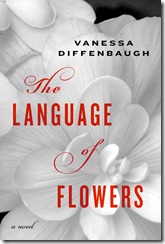For Vanessa Fleming Diffenbaugh, who attended Chico public schools, graduated from Chico High School and studied education and creative writing at Stanford, it all began in a used bookstore. There she found a volume by Kate Greenaway detailing flower symbolism.
What bloomed is a novel of emotional depth and uncommon force. "The Language of Flowers" ($25 in hardcover from Ballantine Books; in e-book editions for Amazon Kindle and Barnes and Noble Nook; and in audio book format) tells the story of Victoria Jones. At age 18 she has had a stream of foster families but nowhere to call home. Meredith, her social worker, takes her to transitional housing. But soon she finds herself homeless on the streets of San Francisco. All she knows are the flowers.
In the third grade Victoria stayed with Elizabeth, a single woman who taught her about the language of flowers. "It's from the Victorian era, like your name," Elizabeth says. "If a man gives a lady a bouquet of flowers, she would race home and try to decode it like a secret message. Red roses mean love; yellow roses infidelity. So a man would have to choose his flowers carefully."
Now, years later, Victoria must answer the question: How can someone love who has never experienced love? A neighborhood florist discovers her skill with flowers; soon Victoria is creating extraordinary arrangements that seem to bring into being love and desire in those who purchase them. But for Victoria, life is lavender. Mistrust. She is hiding a secret that perhaps can only be expressed in flowers.
Diffenbaugh will be talking about her novel at 7:00 p.m. this Thursday, September 1, at the Chico Women's Club, 592 E. 3rd Street, in a free literary event. Lyon Books in Chico can provide more information.
It comes as a shock when Victoria realizes that the definitions Elizabeth had called "nonnegotiable" (an appendix provides Victoria's dictionary) were not actually settled. "Columbine symbolized both desertion and folly." She realizes "I had given Meredith peony, anger but also shame." Just what messages are the flowers sending? And that flower vendor, Grant. What part does he play in all this? "Perhaps the unattached, the unwanted, the unloved, could grow to give love as lushly as anyone else."



